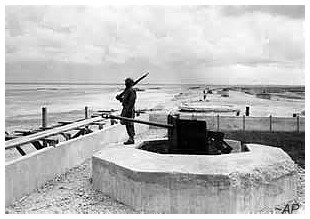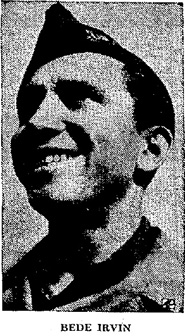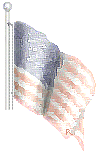AP PHOTOGRAPHER KILLED IN ACTION
LONDON, (AP), Bede Irvin, Associated Press war photographer, was killed in action in the Normandy front Tuesday, United States army authorities have announced.
Word from the public relations office of the United States 9th air force said Irvin was killed near Port Hebert, four miles north of St. Lo This, was verified by two Red Cross representatives. Further details were not available immediately.
Irvin, a native of Des Moines, Ia., would have been 34 next Thursday. He volunteered for foreign service in the early part of the war and was the first American photographer assigned to the European theater of operations by the Associated Press in preparation for the allied opening of the western front. He left the United States in April, 1934 for assignment in London.
Source: The Council Bluffs Nonpareil, Council Bluffs, Iowa, Wednesday, July 26, 1944, Page 10
![]()
Irvin, Killed by B-26 Bomb, Given Tribute
U. S. Ninth Air Force Headquarters in Normandy—(AP)—Maj. Gen. Lewis H. Brereton, commander of the Ninth air force, paid tribute Tuesday night to Bede Irvin, Associated Press photographer who was killed by a bomb from a B-26 Marauder, which fell short of its target.
Brereton issued this statement: “I have just learned of the death of George Bede Irvin, war correspondent photographer for the Associated Press assigned to the Ninth air force command.
“He was killed by the explosion of a bomb from one of our own bombardment aircraft while photographing coordinated activities of our air and ground forces in a forward area of the St. Lo battlefront.
“Mr. Irvin’s death, which I understand is the first casualty among American civilian war correspondents in the present campaign, can but serve to exemplify the role that he and his colleagues have played and will play in this war.
“He was an unarmed observer who, heedless of personal danger, flew with us, lived with us and worked with us ‘hat through the medium of his profession he might bring home to all of us the truths of war.
“During the period of his assignment with the Ninth air force, I came to know Mr. Irvin well.
“I feel a deep sense of personal loss at his passing, which should be regarded by one and all as the loss of a highly trained professional soldier who died in service of his country.”
Irvin was killed Tuesday shortly after he had taken pictures of the mighty serial barrage, which set off the new Allied drive in Normandy. The medium bombers were headed toward the nearby German lines.
Someone shouted, “Watch out, bombs from the Marauders are falling short.”
Irvin, who was sitting in a jeep, was killed by a bomb fragment as he dived for a ditch.
The Allied field was near Pont Hebert, four miles north of St. Lo.
Irvin, a tall, good-natured fellow, would have been 34 next Thursday.
He was a native of Des Moines, Ia., and volunteered for foreign service in the early part of the war.
He was the first American photographer assigned to the European theater of operations by the Associated Press and left the United States in April, 1943, for London. He had been on the Normandy front since D-day.
Lee McCardell of the Baltimore Sun, who was with Irvin at the time the Marauders flew over the field, said Irvin “apparently hesitated a split second to pick up his camera before diving for a nearby ditch.
“He was caught in midair by a bomb fragment and killed instantly.”
Irvin was found by McCardell crumpled in a ditch with one camera around his neck and the other lying near an outstretched hand.
Source: Waterloo Daily Courier, July 26, 1944 (photo included)
![]()
THE PRESS

Tall, boyish Photographer Bede Irvin of Des Moines went overseas for the Associated Press with hell-for-leather enthusiasm. When D-day came, he was delighted. Last week he watched U. S. infantrymen moving through barrage smoke west of saint-Lo. He forgot caution, barely noticed a wave of marauders coming in low behind him as someone yelled: “Watch out, their bombs are falling short.” In the moment-too-long he waited to grab his camera before jumping for a ditch, a bomb fragment got him.
He was the 18th U.S. newsman to be killed in World War II.
Source: Time Magazine, August 07, 1944
![]()
George Bede Irvin was born July 27, 1910 to George T. and Effie Agnes Nixon Irvin. He died July 25, 1944 and is buried in Normandy American Cemetery, Colle-sur-Mer, France. He was awarded the Purple Heart.
Source: abmc.gov
![]()

